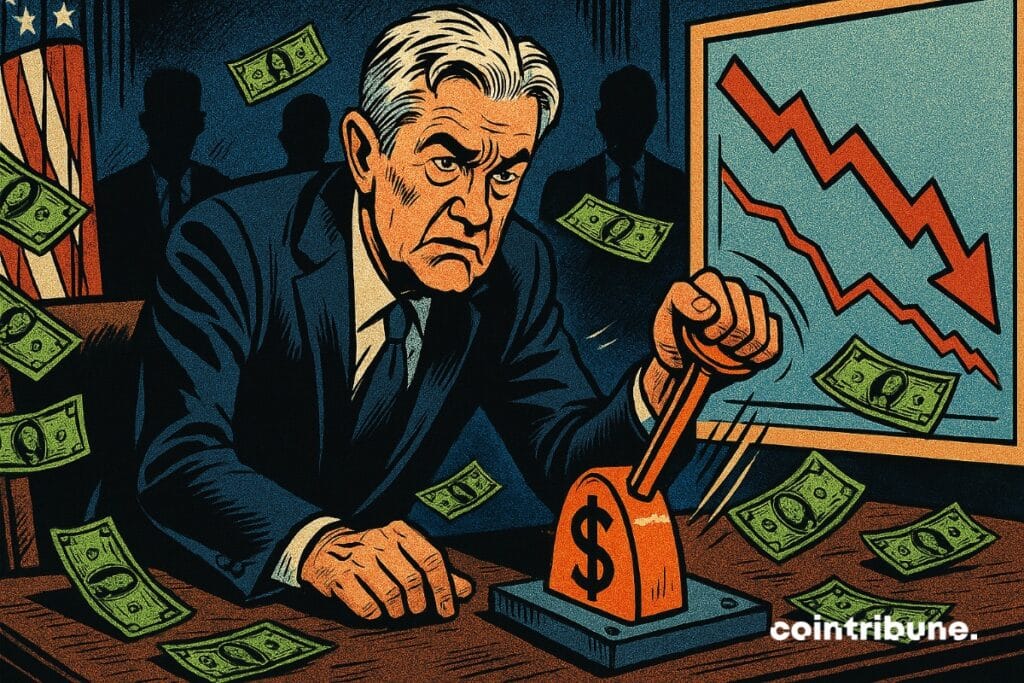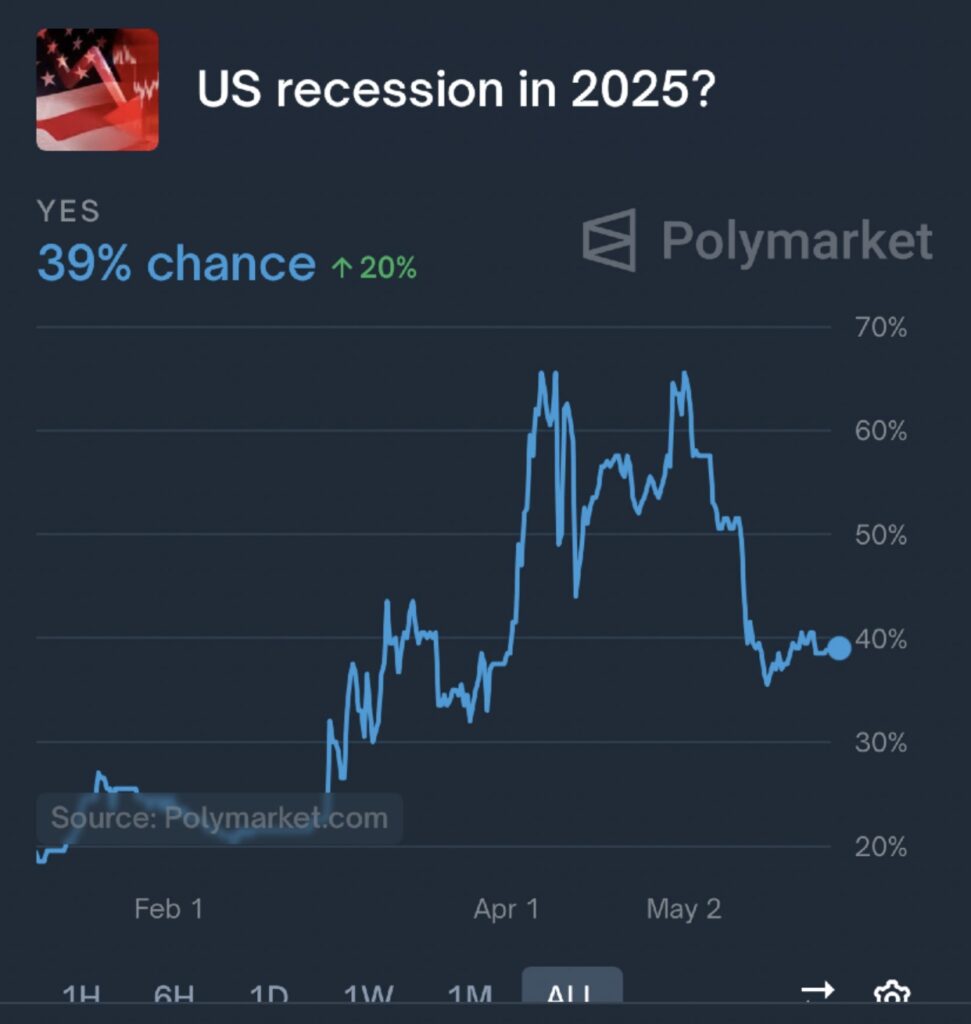21h05 ▪
5
min read ▪ by
The Fed meets in June 2025 amid economic uncertainty. Persistent inflation, a robust labor market, and trade tensions complicate the decision on interest rates. What choices will the central bank make? What impacts for the economy and financial markets?


In Brief
- The Fed hesitates between maintaining high rates and considering cuts, depending on inflation and labor market developments.
- Trade tensions and a recession risk estimated at 39% heavily weigh on upcoming monetary decisions in June.
- This uncertainty pushes some investors toward bitcoin, seen as protection against inflation.
Economy: why the labor market and inflation will weigh on the Fed’s June decision
Peter Schiff warns about a bill that will cause the loss of the dollar, which could worsen pressure on monetary policy. This alert echoes the Fed’s concerns as it prepares to assess the US economy in June, particularly the labor market and inflation. Several key factors could also influence its decision.
However, core inflation, measured by the consumer price index excluding food and energy, remains at a high level, around 3.2%, well above the Fed’s target of 2%. Thus, the next Consumer Price Index (CPI) report, expected on June 11, will be a decisive indicator for the direction of economic and monetary policy.
A Fed in “observation” mode before the June meeting
Jerome Powell recently stated:
We remain attentive to data developments before adjusting our policy.
This caution reflects the complexity of the context. The dilemma is clear: cutting rates could boost employment but reignite inflation. Maintaining or raising rates would slow growth, with a risk of higher unemployment and a slowdown of the economy, already estimated at moderate growth.
What this means for markets and the real economy
This wait-and-see stance will have tangible repercussions:
- A status quo would reassure financial markets about the stability of monetary policy but limit short-term growth potential;
- Borrowers, especially in real estate, would continue to face high costs, slowing some purchase projects;
- A moderate rate cut would be a strong signal to stock markets, often sensitive to accommodative measures;
- It could revive credit-dependent sectors such as real estate and consumption;
- Conversely, prolonged inaction against inflation could worsen the pressure on purchasing power! Thus slowing consumption and increasing recession risk.
The Fed’s wait-and-see stance, with high rates and recession risk, could push some investors toward bitcoin, seen as protection against inflation and an alternative to traditional markets.
Scenarios for June: status quo or surprises?
In the end, what to expect for the Fed’s June meeting interest rates? The Fed consensus favors keeping rates stable between 5.25% and 5.50%. Susan Collins emphasizes caution, given inflation still above 3% year-on-year, rejecting rushed cuts.
Yet, several elements could change this trajectory. An unexpected drop in inflation, an observed slowing of the US GDP (+1.8% year-on-year according to the Bureau of Economic Analysis), or a easing of trade tensions, notably with China, could prompt the Fed to announce a first monetary easing, possibly as soon as June.
The Polymarket platform illustrates market perception of a possible US recession in 2025, with about a 39% chance assessed. This uncertainty reflects economic and monetary tensions weighing on Fed decisions.


US Economy: external factors to watch
Negotiations between the United States and China are crucial:
- Significant progress would strengthen business confidence and encourage investments;
- Conversely, without progress, uncertainties would persist, hindering economic growth.
The June 2025 meeting thus promises to be a crucial moment where the Fed must find balance between caution and responsiveness. Closely monitoring key indicators — inflation, employment, growth — as well as the evolution of trade tensions will be essential to anticipate the trajectory of interest rates and their concrete repercussions on the economy and markets. Meanwhile, European markets are benefiting from the Fed’s current caution.
Maximize your Cointribune experience with our “Read to Earn” program! For every article you read, earn points and access exclusive rewards. Sign up now and start earning benefits.
The world is evolving and adaptation is the best weapon to survive in this undulating universe. Originally a crypto community manager, I am interested in anything that is directly or indirectly related to blockchain and its derivatives. To share my experience and promote a field that I am passionate about, nothing is better than writing informative and relaxed articles.
DISCLAIMER
The views, thoughts, and opinions expressed in this article belong solely to the author, and should not be taken as investment advice. Do your own research before taking any investment decisions.

